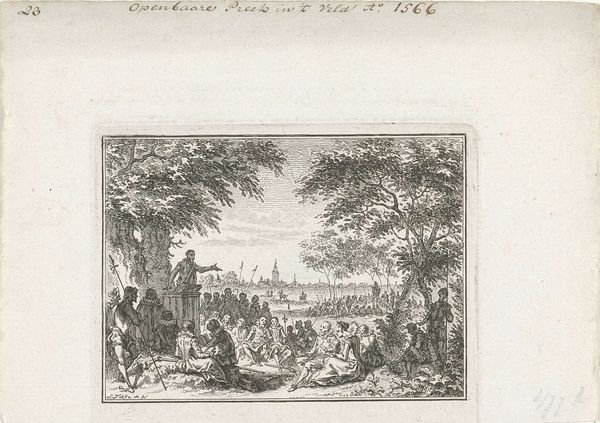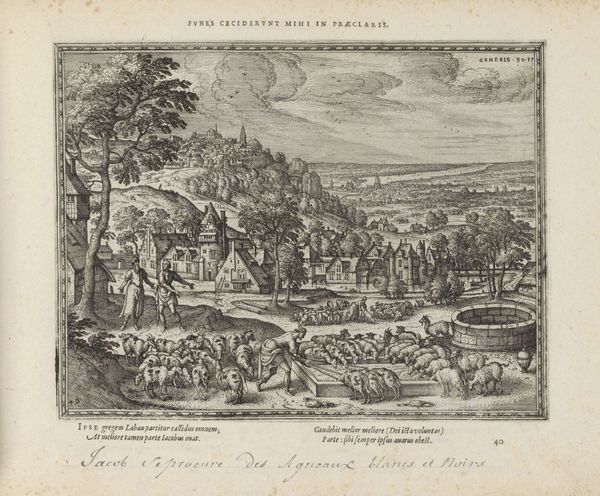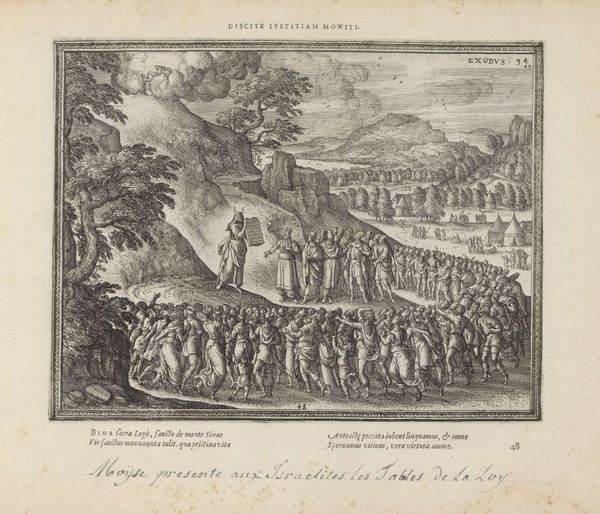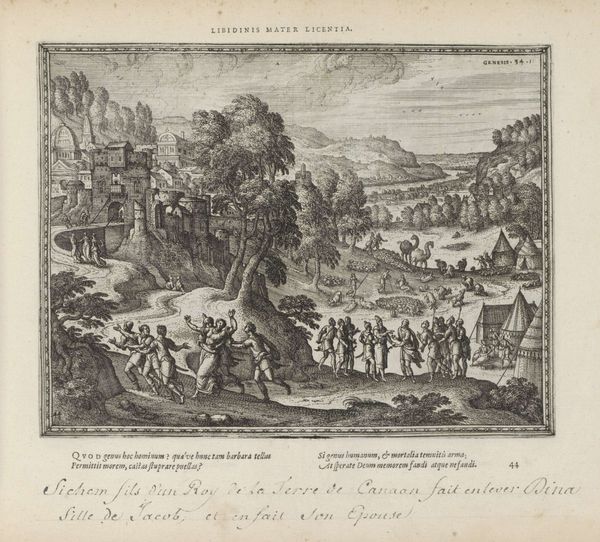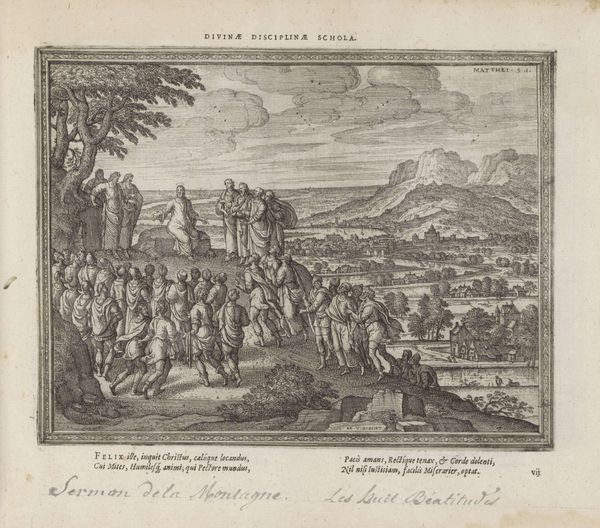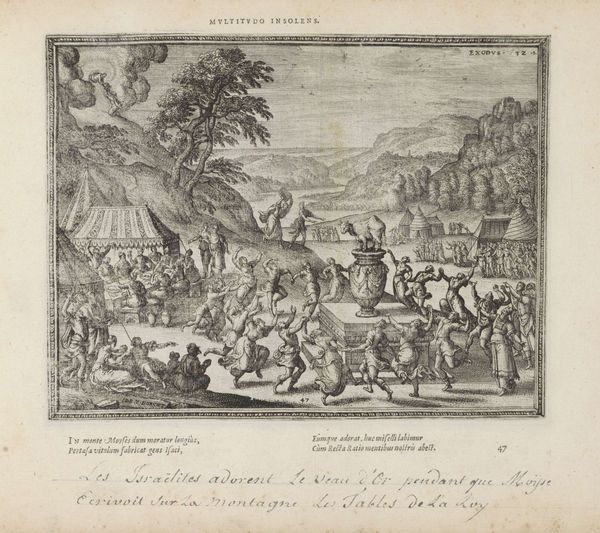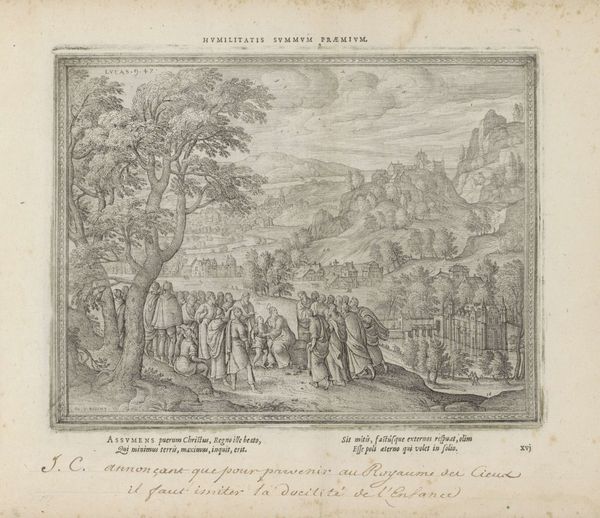
print, etching, engraving
#
baroque
# print
#
etching
#
landscape
#
genre-painting
#
history-painting
#
engraving
Dimensions: height 188 mm, width 242 mm
Copyright: Rijks Museum: Open Domain
Editor: Here we have "Jacob and Laban" by Pieter van der Borcht I, an engraving and etching dating from 1582 to 1613, housed in the Rijksmuseum. It’s quite detailed, almost like a miniature world contained within a frame. The landscape recedes into the distance, with figures bustling about. How do you interpret this work purely from its formal qualities? Curator: Focusing on its formal composition, we see a distinct division between the foreground and background achieved through line and texture. The foreground is densely populated with figures and animals, rendered with sharp, precise lines. Notice the tree acting as a compositional anchor. How does this distribution of detail impact the viewer’s perception of space and narrative within the image? Editor: I think the busyness in the front makes the background feel really far away, like it’s a completely different place. And maybe the contrast directs the viewer's eye to the tension between the characters? Curator: Precisely. The artist employs contrast not just in light and shadow but also in the density of information. Consider also the strategic use of diagonals in the composition, particularly in the arrangement of the tents and the landscape’s recession. Does this angling contribute to a sense of dynamism or perhaps unease? Editor: It makes everything feel a little unbalanced, as if things could shift or change at any moment. Curator: Indeed. This careful manipulation of form generates a palpable tension. The line work is meticulous, almost obsessive, detailing textures to give life to forms. The engraving and etching show virtuosity through creating a landscape with volume. The overall effect, however, feels somewhat artificial, studied, wouldn't you agree? Editor: I see that now. Even with all that detail, it doesn’t feel quite natural. Focusing on the artist’s decisions makes it clear there's a lot of careful control at play here. Curator: A rewarding encounter that illustrates the complexity embedded within its visual language. Editor: Definitely! It has shown the rewards of just closely observing.
Comments
No comments
Be the first to comment and join the conversation on the ultimate creative platform.
